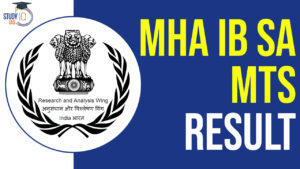Daily Current Affairs for UPSC 2023
Q) Which of the following is not correct with respect to impact of El Niño on Indian Monsoon?
- The strength of monsoon winds decreases over the Indian Ocean
- El Niño can lead to an early onset of the monsoon season
- El Niño can lead to an early withdrawal of the monsoon
- El Niño can adversely impact the spatial redistribution of rainfall
Daily Current Affairs for UPSC – 31 July April 2023
Explanation:
The India Meteorological Department (IMD) said that a strengthening El Nino could suppress rainfall in the second half of the monsoon.
- Option (2) is the correct answer: The impact of El Niño on Indian Monsoon are as follows:
- Weakening of Monsoon Winds: During El Niño years, the trade winds across the Pacific weaken, reducing their ability to push moisture-laden air towards the Indian subcontinent. As a result, the monsoon winds over the Indian Ocean and the Arabian Sea weaken, leading to a decrease in the overall strength of the monsoon.
- Shift in Rainfall Patterns: The regions that typically receive abundant rainfall during the monsoon season may experience below-average rainfall, while regions that usually receive less rainfall may receive more. This spatial redistribution of rainfall can have significant implications for agriculture, water resources, and ecosystems.
- Delayed Onset and Early Withdrawal: El Niño events can delay the onset of the monsoon season in India. Similarly, El Niño can lead to an early withdrawal of the monsoon, shortening the overall duration of the rainy season.
Q) With respect to El Niño, consider the following statements:
Statement – I : During El Niño events, there is often reduced rainfall in parts of Southeast Asia, Australia, and parts of Africa, while increased rainfall occurs in the central and eastern Pacific.
Statement – II : The weakening of the trade winds allows warm surface waters to move eastward, accumulating in the central and eastern Pacific.
Which one of the following is correct in respect to the above statements?
- Both Statement – I and Statement – II are correct and Statement – II is the correct explanation for Statement – I
- Both Statement – I and Statement – II are correct and Statement – II is not the correct explanation for Statement – I
- Statement – I is correct but Statement – II is incorrect
- Statement – I is incorrect but Statement – II is correct
Explanation:
- Statements 1 and 2 are correct: The term El Niño (Spanish for ‘the Christ Child’) refers to a warming of the ocean surface, or above-average sea surface temperatures, in the central and eastern tropical Pacific Ocean. During an El Niño event, there is a weakening or even a reversal of the trade winds along the equator, which disrupts the normal pattern. This weakening of the trade winds allows warm surface waters to move eastward, accumulating in the central and eastern Pacific. As a result, the thermocline (the boundary between warm surface waters and cooler waters below) becomes sloped, with the warm water layer becoming deeper in the eastern Pacific. The warm ocean temperatures in the eastern Pacific have profound effects on the atmosphere above. The warm water heats the overlying air, causing it to rise and create an area of low atmospheric pressure, disrupting the normal atmospheric circulation patterns. During El Niño events, there is often reduced rainfall in parts of Southeast Asia, Australia, and parts of Africa, while increased rainfall occurs in the central and eastern Pacific, including coastal areas of South America. While, rainfall increases drastically in Ecuador and northern Peru, contributing to coastal flooding and erosion. At the same time, El Niño brings droughts to Indonesia and Australia.
Q) Consider the following statements about Space Debris:
- They can collide with operational satellites and spacecraft, causing damage or destruction.
- Project NETRA is an early warning system in space to detect debris and other hazards to Indian satellites.
- The Kessler Syndrome is a phenomenon in which a collision between large objects produce debris to trigger more collisions and significant amount of debris in the orbit.
Which of the statements given above are correct?
- 1 and 2 only
- 1 and 3 only
- 2 and 3 only
- 1, 2 and 3
Explanation:
- Statements 1 and 3 are correct: According to the NASA, there are approximately 23,000 pieces of debris larger than a softball orbiting the Earth. They travel at speeds up to 17,500 mph, fast enough for a relatively small piece of orbital debris to damage a satellite or a spacecraft. Space debris can collide with operational satellites and spacecraft, causing damage or destruction. This can lead to the loss of critical communication, navigation, weather monitoring, and remote sensing services that rely on satellites. Even small debris fragments can cause severe damage to spacecraft hulls and vital systems. Reduction of Orbital Slots: The accumulation of space debris in specific orbital regions can limit the availability of desirable orbital slots for future missions. A major collision between large objects could trigger a chain reaction known as the Kessler Syndrome, where the resulting debris creates more collisions, leading to a self-sustaining cascade that significantly increases the amount of debris in orbit.
- Statement 2 is correct: Project NETRA is an early warning system in space to detect debris and other hazards to Indian satellites.
- Once operational, it will give India its own capability in Space Situational Awareness (SSA) like the other space powers.
- Under NETRA, the ISRO plans to put up many observational facilities: connected radars, telescopes, data processing units and a control centre.
- NETRA can spot, track and catalogue objects as small as 10 cm, up to a range of 3,400 km and equal to a space orbit of around 2,000 km.
Q) Consider the following statements about the Commission for Air Quality Management (CAQM):
- The Commission for Air Quality Management is a statutory body.
- The CAQM has a jurisdiction over all the major polluting cities across India.
- It has power to conduct random inspections of any premises including factories and may shut down an industry in case of non-compliance.
How many of the statements given above are correct?
- Only one
- Only two
- All three
- None
Explanation:
This July, 2023, Delhi recorded the cleanest air for the month since 2019, according to the Commission for Air Quality Management (CAQM).
- Statements 1 and 3 are correct but Statement 2 is incorrect: About the Commission for Air Quality Management (CAQM):
- It is a statutory body formed under the Commission for Air Quality Management in National Capital Region and Adjoining Areas, Act 2021 as an overarching body to carry out air quality management in Delhi NCR.
- The CAQM has replaced the Environment Pollution (Prevention and Control) Authority (EPCA) which was appointed by the SC in 1998 and had been active for 22 years.
- The Commission basically aims at better coordination, research, identification, and resolution of problems related to air quality in NCR and adjoining areas.
- It has jurisdiction over the NCR, including areas in Haryana, Punjab, Uttar Pradesh and Rajasthan
- The Commission will supersede bodies such as the central and state pollution control boards of Delhi, Punjab, Haryana, UP and Rajasthan.
- It has power to restrict industries in any area, conduct random inspections of any premises including factories. It may also shut down an industry or cut its water and power supply in case of non-compliance.
- CAQM will also be monitoring the actions taken by the states to prevent stubble burning.
- The orders and directions of the CAQM will prevail in case of any conflict between directions issued by the State governments and the CAQM.
Q) Consider the following statements about Trans Lunar Injection (TLI):
- It is a critical maneuver performed during space missions to send spacecraft from Earth’s orbit to a trajectory that will take them to the Moon.
- During a TLI, the spacecraft’s propulsion system fires its engines to accelerate the spacecraft to break free from Earth’s gravitational pull and embark on its journey toward the moon.
- It is performed when the spacecraft is at a specific point in its orbit known as the ‘apogee.’ or the farthest point to Earth.
Which of the statements given above are correct?
- 1 and 2 only
- 1 and 3 only
- 2 and 3 only
- 1, 2 and 3
Explanation:
The Indian Space Research Organisation (ISRO) has performed the TransLunar Injection (TLI) to slingshot Chandrayaan-3 towards the moon.
Statements 1 and 2 are correct but Statement 3 is incorrect: The Trans Lunar Injection (TLI) is a critical maneuver performed during space missions to send spacecraft from Earth’s orbit to a trajectory that will take them to the Moon. It is a key step in lunar missions, enabling spacecraft to escape Earth’s gravitational pull and travel to the Moon. The TLI is performed when the spacecraft is at a specific point in its orbit known as the ‘perigee’ or the closest point to Earth. During a TLI, the spacecraft’s propulsion system fires its engines to accelerate the spacecraft. The spacecraft gains enough speed to break free from Earth’s gravitational pull and embark on its journey toward the moon. The amount of thrust and duration of the TLI burn depends on various factors, including the spacecraft’s mass, its velocity in Earth’s orbit, and the specific mission objectives. o Once the TLI is successfully completed, the spacecraft is put on a lunar trajectory, and it will continue its journey to the Moon without further propulsion from Earth.


 SSC Stenographer 2024 Notification Out a...
SSC Stenographer 2024 Notification Out a...
 IB SA MTS Final Result 2024 Out at mha.g...
IB SA MTS Final Result 2024 Out at mha.g...
 Model Skill Loan Scheme, Eligibility, Re...
Model Skill Loan Scheme, Eligibility, Re...

















